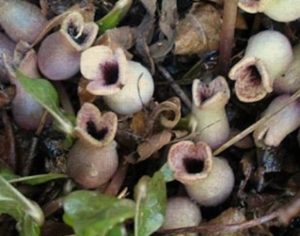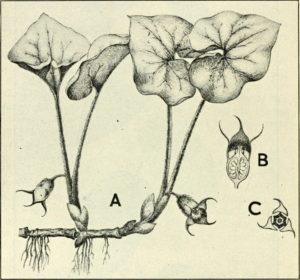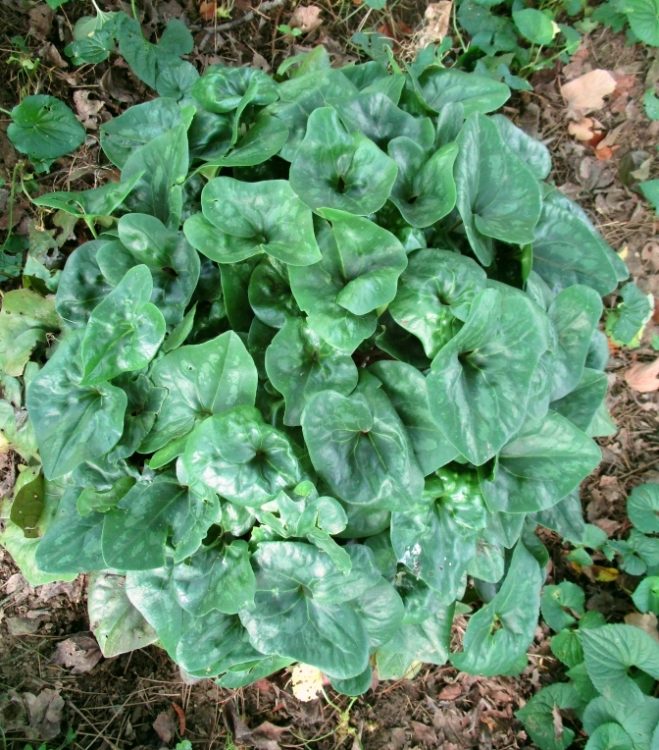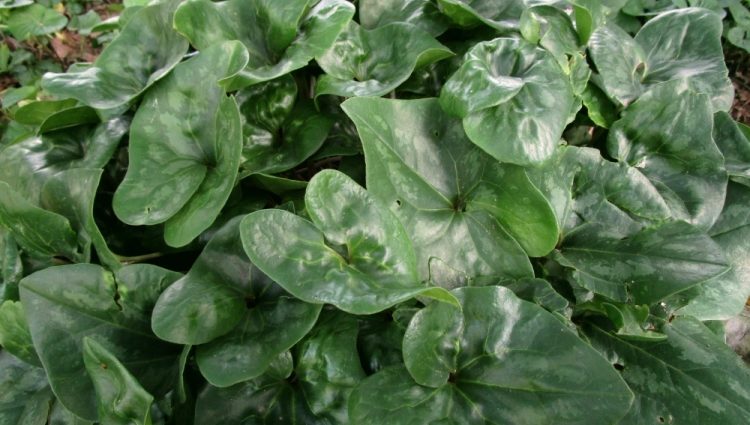When I was a little girl living in the holler, I took special note of plants my parents loved. They often pointed out wildflowers, trees, vines, shrubs, and grasses, etc. The wisdom they imparted was such a treat, because, in addition to a little botanical information, my brother and I were often endowed with ancestral stories related to particular plants.

I was never a fan of the heat, so, most of the time, I traveled or played in the shade – plentiful areas in the dark wooded hollers. In those days, my mother showed me one of her favorite shade plants. She called it the little piglet (or piggy) plant, due to the little “piglet-like” flowers underneath. She told me to pinch one of the flowers and put it under my nose. The scent was a sharp, sweet, spicy aroma. For weeks afterward, I roamed the shaded areas pinching piggies.
When I grew into adulthood and developed cares and curiosities about florae, I remembered that little plant. I searched in vain for the “piggy plant” and happened to come upon information about what it really was: wild ginger.
Wild ginger (Asarum canadense) is a stemless native perennial that grows close to the ground. The leaves are soft, shaped like a heart or kidney, and somewhat streaked or marbled green. The dark, bell-shaped flowers grow underneath, even closer to the ground, and taper to three points at the tip. Some call it a “little brown jug” plant, because the flowers remind them of a tipped over jug. According to Larry Stritch from the U.S. Forest Service, the flower’s position attracts “small pollinating flies” that crawl inside the flowers when the weather is cold. The fly consumes the pollen, some of which attaches to its body. When the fly crawls into the next flower, it deposits the pollen. Ants love the elaiosome on the seed1)Oxford dictionary – Elaiosome: Any of various oil-rich structures or tissues attached to or surrounding the seeds of certain plants; especially one that acts as an attractant to ants that aid dispersal by carrying the seed away from the plant. so they take the entire seed, eat the yummy stuff, and chuck the seed, which then germinates. (Another source, Mother Earth Living, states the seed dispersal is unknown and that the flower may be self-pollinating.)

Wild ginger is a member of the Birthwort family. Here, it grows in the eastern United States, and prefers shady places with “rich Mesic soils.” The plant can live through temperatures below 40 degrees.2)Strauch, Betsy. 2018. “Mother Earth Living.” Herb to Know: Wild Ginger. Accessed May 2021. It is a slow-grower, but, once happy and flourishing, spreads by rhizomes just underneath the earth’s surface. The rhizomes branch out and are fairly delicate. The plant is not true ginger (Zingiber officinalis) but does smell the same, albeit less pungent.
Wild ginger’s root reportedly has culinary and medicinal value. Both Native Americans and settlers used it as a spice. Back in the day, settlers also cooked the root in sugar water to make candy or syrup. Wild ginger has been used to quell stomach issues and fever. Settlers used it as one of several ingredients for toothpaste. The Meskwaki used liquid from the steeped root for earaches.3)Strauch, Betsy. 2018. “Mother Earth Living.” Herb to Know: Wild Ginger. Accessed May 2021. Native Americans also used wild ginger “as a mild sedative”4)Garrett, J.T. 2003. The Cherokee Herbal: Native Plant Medicine from the Four Directions. Rochester: Bear & Company. to relax the heart and nerves. Women once “drank a strong concoction”5)Lust, John. 1974. The Herb Book. New York : Bantam Books. of the root to bring on menstruation.6)Strauch, Betsy. 2018. “Mother Earth Living.” Herb to Know: Wild Ginger. Accessed May 2021. Today, scientists oppose consuming the plant because it “may contain poisonous compounds” (some sources say carcinogenic).7)Stritch, Larry. n.d. “U.S. Forest Service.” Plant of the Week: Wild Ginger. Accessed May 2021. The plant does have antibiotic and antifungal properties and has treated wounds when used as a poultice.
Other names for wild ginger: Black snakeweed, Canada snakeroot, coltsfoot snakeroot, false coltsfoot, heart snakeroot, Indian ginger, southern snakeroot, Vermont snakeroot.8)Lust, John. 1974. The Herb Book. New York : Bantam Books. Other species of wild ginger also grow in Asia and Europe.

**Featured Image – photograph by Delonda Anderson, from her backyard
References
| ↑1 | Oxford dictionary – Elaiosome: Any of various oil-rich structures or tissues attached to or surrounding the seeds of certain plants; especially one that acts as an attractant to ants that aid dispersal by carrying the seed away from the plant. |
|---|---|
| ↑2, ↑3, ↑6 | Strauch, Betsy. 2018. “Mother Earth Living.” Herb to Know: Wild Ginger. Accessed May 2021. |
| ↑4 | Garrett, J.T. 2003. The Cherokee Herbal: Native Plant Medicine from the Four Directions. Rochester: Bear & Company. |
| ↑5, ↑8 | Lust, John. 1974. The Herb Book. New York : Bantam Books. |
| ↑7 | Stritch, Larry. n.d. “U.S. Forest Service.” Plant of the Week: Wild Ginger. Accessed May 2021. |
